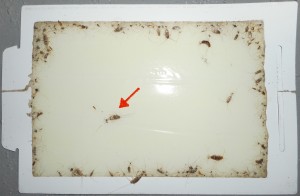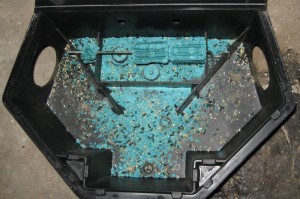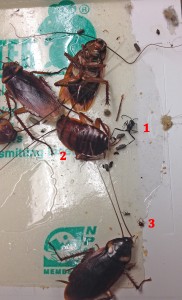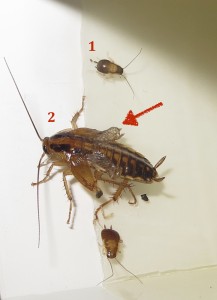Why? To start, let’s consider the distinction between an inspection and monitoring. An inspection is a view of pest activity at that moment in time. But what if pests are only active at night? Or on weekends when the building is quiet? Thus, monitoring is a record of pest activity in the times that you are not present.
Integrated Pest Management, or IPM, is a decision making process that uses information about pest populations to decide how to manage them. Monitoring is a critical step in IPM programs that offers valuable insights:
1. Species Identification: insect monitors intercept pests, allowing a trained professional to identify them. In turn, identification provides information about preferred harborage, food and water sources.
2. Early Detection: monitors can intercept pests that are present at low levels, and can help identify a problem before it gets out of hand.
3. Directionality: monitors can provide information about pest directionality: where are they coming from [harborage] and where they are going [food locations]. Monitors might also provide clues about non-obvious pathways, such as overhead areas (Figure 1).

4. Age of Population: rodent bait stations can contain informative evidence (Figure 2). Are droppings all one size, or are they mixed sizes, suggesting the presence of different age groups? Are droppings black, meaning that they are visiting the station for the first time, or are some droppings the color of the bait, suggesting multiple feedings?

Parasitoids, predators and secondary pests can also tell you about the age of the infestation (Figure 3). Ensign wasps are egg-case parasitoids of American cockroaches. Their presence suggests that the cockroaches are actively reproducing nearby, whereas secondary pests may indicate the presence of old bait or pest carcasses.

5. Proximity to Harborage: juvenile pests, including rodents and cockroaches, stay close the harborage. Intercepting them on monitors can narrow your search to nearby areas for identifying the harborage (Figure 4).
6. Management Efforts: some monitors might contain evidence about recent control efforts (Figure 4). Finding German cockroaches with crinkled wings is a sign that they have been treated with an insect growth regulator. But what if you didn’t apply this kind of product? Perhaps the cockroaches are coming from a neighboring area.

Effective monitoring programs provide good coverage of pest vulnerable areas. The location of monitoring devices are recorded on a facility map, and a pest catch log records the number of pests caught on each monitor. These specifications allow the pest professional to collect enough information to determine if a treatment is needed, where to focus efforts and what treatment should be applied.